Henry VIII
| série: | Histoire (Angleterre) |
| éditeur: | Allen+Unwin |
| auteur: | Bowle John |
| classement: | biblio3D |
| année: | 1964 |
| format: | cartonné |
| état: | TBE/N |
| valeur: | 8 € |
| critère: | ** |
| remarques: | English book Henry VIII book with some illustrations 1/ prelude to power - Henry born 1491, dead 1547 founded a modern state, a national church and was promoter of the British navy - Henry VIII (1491-1547, king of England 1509-1547, he was the son of king Henry VII and of Elizabeth of York, he was well known for his six spouses and he inspired the mythe of Barbe Bleu in Grimm's fairy tales - he was the second son after Arthur - he had two sisters: a) Margaret was queen consort of Scotland married with James IV and at his death, she became regent of Scotland for their son James V (Mary queen of Scots was her grandchild and was successor of James V from 1542 to 1567) n.b. James VI (James Charles Stuart) 1566-1625 succeeded to Mary queen of Scots, he was king of Scotland from 1567 and King of England and Ireland as James I from the union of the Scottish and English crowns from 1603 to 1625, the kingdoms of Scotland and England being individual sovereign states b) Mary married Charles Brandon, duke of Suffolk 2/ glorious morning - he was the second son of Henry VII and of Elizabeth of York, Henry VII became king after his victory on Richard III, the last Plantagenet, Henry VII had both Lancastrian and Yorkist blood n.b. Tudor monarchs ruled the kingdom of England and its realms, including their ancestral Wales and the Lordship of Ireland from 1485 until 1603, with six monarchs in that period: Henry VII, Henry VIII, Edward VI, Jane, Mary I and Elizabeth I - Henry VII died 1509 and Henry VIII became successor when his brother Arthur died prematurely 1502, Arthur was married 1501 with Catherine of Aragon but deceased 6 months later in 1502 and Henry agreed to marry Catherine with a dispense of the papacy >> p. 30 the young Henry, duke of York, was described 1499 by Erasmus who visited Eltham with sir Thomas More, Erasmus declared that Henry had already something of royalty in his demeanour - white and green were the Tudor's colours, at that time England's population was about 3 million and the church owned about 1/3 of the territory, under Henry VIII, gentry and bourgeois (the new men) were developing rapidly 3/ foreign adventure - 1510 Henry VIII was aged 18 years - Valois and Habsburg dominated the continent with Italy as their battlefield, England was limited in its intervention while Scotland had developed strong relations with France 4/ oceanic horizons - the growth of the navy was Henry VIII's own work, he commanded one of the greatest ships in England: the Mary Rose >> p. 67 1546, creation of the Corporation of Trinity House in charge of buoys and lighthouses around the British isles >> p. 68 however the English were the most backward of the significant peoples along the Atlantic littoral on the fairway to the New World >> p. 69 in Muscovy, Ivan IV had consolidated the nucleus of a great continental power, he was calling himself tsar (=caesar) and was claiming to be heir to the empire of Eastern Christendom - England at that time entertained already good relations with Russia 5/ the cardinal of York - the French alliance was renewed with Francis I, duc d'Angoulême who succeeded Louis XII, however the peace treaty was established on a rather weak basis - Francis has become a brilliant king who wanted to be recognised as such - the natural ally of Henry VIII was at that time Spain and the Holy Empire, espc. with Charles V (Charles Quint) who was the nephew of queen Catherine d'Aragon - Henry's closest relations were: a) Charles Brandon, duke of Suffolk (1484-1545), favourite boon companion of Henry, through his third wife, Mary Tudor, he was brother-in-law to King Henry VIII - performed secretly in France, the marriage occurred without the consent of Mary's brother, Henry VIII, the marriage necessitated the intervention of Thomas Wolsey; Henry eventually pardoned the couple, after they paid a large fine b) cardinal Thomas Wolsey, archbishop of York (1473-1530), he was Lord Chancellor and papal legate, was practically ruler of England but detested by the populace for his arrogance and apparent domination of the king n.b. contumacious = insolent - the French in Italy had a dominant position and remained very dangerous, espc. after Francis'victory on the Swiss at Marignano (1515) - however Henry VIII achieved some success in France when from Calais, his army invaded Picardy (victory at Guinegate, Thérouanne and Tournai), but Henry's army distinguished particularly at Flodden when smashing the Scots of James IV n.b. Guinegate formed a part of the War of the League of Cambrai, Henry VIII and Maximilian I were besieging the town of Thérouanne in Artois; after this victory, the Ligue conquered Thérouanne and Tournai, this battle is also called battle of the Spurs (éperons) 6/ the logical warfare (the Reform) >> p. 83 Henry's versatile mind had always been fascinated by the theological problems then deemed crucial to salvation and he early encouraged the Christian humanists (such as Thomas More) who where applying Greek scholarship to the textual criticism of the bible >> p. 89 1517 uproar created by Luther's doctrine repudiating in respect of god all human intermediaries such as priest and pope and by 1520 the Lutheran movement was dividing Germany between the catholic areas of Austria, Bavaria, Wurtemburg and Rhineland and the Lutheran territories of Saxony, Hesse, North Germany along the Baltic, Scandinavia and Switzerland - at first Henry VIII was again Luther's doctrine as presented 1521 at the Worms assembly >> p. 92 in that connection, Henry VIII wrote a book titled Assertio septem sacramentorum adversus Martinus Lutherus, >> see information 7/ the European dynasts - 1520, Henry VIII met Francis I at the Field of Cloth of Gold - execution of the duke of Buckingham - lady Mary was to marry Charles V and cardinal Wolsey to be elected pope at the death of Leo X, but Adrian VI was elected instead, he was succeeded by the second Medici pope, Clement VII in 1523 - visit of Charles V in London when invasion of France was decided 8/ a Habsburg triumph - 1521, in England, Henry was now concerned with the kingdom of Scotland, then where were war activities in France in combination with the Habsburg in Italy 9/ quicksands of diplomacy - 1525, arrival of Thomas Cromwell, as the new assistant of Wolsey - soon the French campaign was to be abandoned - at this stage, lady Mary was the sole legitimate heir - treaty of Madrid between Charles V and Francis I 10/ the king's great matter - 1527, Anne Boleyn, 22 years old, became mistress of Henry - pope Clement VII could not accept the divorce with Catherine of Aragon - nevertheless, as head of the new Church of England , Henry VIII married Anne 1533 and Catherine banished from court died 1536 from cancer, she was recognised as a great queen - 1529, cardinal Wolsey was struck down - institutionalization of the Church of England, dissolution of the monasteries, Thomas Cromwell, a layman and a self-made administrative genius is nominated Lord High Chancellor - two new characters were now gravitating to the king's service: Thomas Cromwell and Stephen Gardiner who was an English bishop and politician during the English reformation 11/ cowe doth ride the bull >> p. 151 when cowe doth ride the bull, then priest beware thy skull, cardinal Wolsey dixit when referring to the dun cow cognisance (knowledge) of the Tudors and the bull of the Boleyn n.b. according to a prophecy of mother Shipton meaning "when the lower shrubs do fall, the great trees quickly follow shall" - 1531, Henry was 40 years old and at the height of his power - Henry's passion was hunting but he bought also a remarkable quantity of books, however in his late age, he developed an malicious ulcer in his left leg - he was now supreme head of England and would go his own way without accepting the pope's authority of Clement VII - Thomas Cranmer succeeded to the archbishop Warham >> p. 169 details about the coronation of Anne Boleyn on 25.1.1533 12/ a body politic compact - 1534, Cromwell's power is increasing and hewas succeeding Wolsey as the first modern secretary of state, with him Henry had supreme spiritual jurisdiction with the Act of Supremacy (1534) - nationalization of the church now "ecclesia anglicana" being independent of the italianate papacy, however Henry did not turn Lutheran >> p. 176 Elisabeth Barton known as the maid of Kent (the mad maid) was executed as a result of her prophecies against the marriage of King Henry VIII of England to Anne Boleyn - 1535, pope Paul III succeeded to Clement VII, execution of Thomas More following his resistance to the new spiritual power of Henry VIII, he said: no national parliament could make its own spiritual jurisdiction - Richard Riche was the king's solicitor general >> p. 184 by 1540, a serious inflation took place, the price of food had risen by 30%, unemployment increased, new men made their fortunes, but the lower classes were greatly hit n.b. nonplus = surprise/puzzle 13/ the monasteries dissolved - 1536 rebellion in Lincolnshire >> p. 190 the monasteries had always been an essential part of the mediaeval establishment, main activities: charity, education for well-born boys and many houses had libraries stocked with illuminated books (563 religious houses counting for 1/3 of the lands of England) - queen Catherine of Aragon passed away January 1536 - the investigations and dispossessions were going on - Jane Seymour, 25, was made queen's maid of honour, shortly afterwards Anne Boleyn was arrested and sent to the Tower, she contested the charges but was executed with sword by the excutur of Calais May 1536 - it was said however that the king invented the accusation to get rid of her 14/ crisis surmounted a Tudor prince - 1536 Whitehall was becoming the center of government, Henry continues to embellish various buildings such as Hampton Court, Windsor and Greenwich, however he is faced by a widespread resistance in the north due to the dissolution of the monasteries and his new religion, this movement was mostly led by a man called captain Cobbler under the banner of the Five Wounds of Christ and a second movement called the pilgrimage of Grace led by the nobleman Robert Aske - Henry was now married with Jane Seymour, problem with Reginald Pole, his cousin - 1537 the new queen is pregnant and bore a son in October but she died 5 days later form puerperal fever whereas lady Mary did her submission to the king - Jane Seymour was the wife Henry loved best, however his son named Edward VI was not recognised by the continental powers which did only consider lady Mary as the legitimate heiress 15/ ill-conditioned wives - 1539 Henry was looking again for a new wife whereas Cromwell was pushing his master into a German alliance - first came Anne of Cleves and the marriage took place January 1540, Henry however misled by Cromwell did not like the new queen who was nicknamed the Flanders Mare and Cromwell made his first mistake by making his master look as a fool - soon was the marriage cancelled and a new marriage was arranged with Catherine Howard on June 1540 and it was the turn of Cromwell to be arrested during his council where all members were his enemies - later on Catherine was accused of adultary >> p. 237 the affairs with Francis Dereham, private secretary and Thomas Culpepper, kinsman of Henry >> p. 238 Henry regretting his ill luck in meeting ill-conditioned wives 16/ entire Empire - 1536 creation of the Act of Union in the British Isles (England, Wales, Ireland and Scotland which remained however independent) >> p. 244/245 description of the political situation in Ireland >> p. 246 the Redshanks being seasoned mercenaries from Scotland where the king James V was dominated by the pro-french faction n.b. he became king at just seventeen months old when his father was killed at the Battle of Flodden on september 1513, he was the third son of king James IV of Scotland and of his wife Margaret Tudor, a daughter of Henry VII of England - following skirmishes at the frontier, war against Scotland was declared and the scots were defeated 1542 at the battle of Dumfries - death of James V at the battle, his only surviving legitimate child, Mary, queen of Scots, succeeded him when she was just six days old - afterwards peace was established in the British isles, all was now ready for the attack in France 17/ matrimonial peace: Anglican schism - 1543 Henry was 53, Edward was 6, Elisabeth 10 and Mary 27 years old - Francis I was now trying to block the Flemish trade with England whereas Henry was induced to reign over Scotland by marrying Mary queen of scots with Edward VI - meanwhile he was looking for a new wife with lady Latimer, born Catherine Carr (31 years old), then Henry married his sixth and last queen in July 1543, however Catherine Carr was tarred with the protestant brush - problems between archbishops Cranmer and Gardiner 18/ last adventure and near bankruptcy - invasion of Scotland by the English army may 1544 towards Edinburgh which was sacked and partly burnt except of the castle which remained impregnable >> p. 268 the enormous expense of the invasion being mounted against France, on top of the expense of the Scottish expedition - however Henry was eager to launch in person the long-planned attack on France, Boulogne was a potential threat and therefore the main objective, after a long siege, Boulogne surrendered July 1544 n.b. peace with France was concluded June 1546 and after 8 years Boulogne was returned to France against the huge sum of two millions crowns 19/ invasion foiled, royal theology - Henry VIII reproached Charles V for leaving England alone in the war, then a French fleet threatened to invade England, however the English fleet was well prepared with strong ships like the Great Harry and the Mary Rose and oceanic entreprises were developing too >> p. 280 the catastrophe of the Mary Rose, sailing warship built 1511 which sank 1545 during a battle in the Solent, the strait north of the Isle of Wight near Portsmouth >> p. 287 the Henrician Anglican church was still catholic in creed with the king as its pope, but tides of continental protestantism had long been seeping into England - now however Henry's last illness had begun 20/ livid sunset - sunk in egotism hard as iron, the old king was at last finished, he met his fate clear headed fighting to the last to guard his son and preserve the dynasty - the shifts of affairs nowe favoured a pro-protestant line with Hertford, prince Edward's uncle who has become guardian of the prince >> p. 293 the affair with Anne Askew (1521-1546) incriminating the queen n.b. she was an English writer, poet, and Protestant martyr who was condemned as a heretic in England and burnt at the stake after having been tortured >> p. 295 execution for treason of Henry Howard, earl of Surrey, he was a man of reckless temper, which involved him in many quarrels and finally brought upon him the wrath of the ageing and embittered Henry VIII, h was arrested, trialed for treason and beheaded on Tower Hill - on 28.1.1547 Henry VIII passed away, he had dominated England for nearly 38 years, Edward Seymour, earl of Hertford became Lord Protector during part of the minority of King Edward VI (reigned 1547–53) >> p. 299 description of Henry VIII's funeral >> quite an interesting book with a good description of Henry VIII and of his time, sometimes abit difficult to understand but generally quite instructive n.b. the TV series Tudor by Michael Hirst was mainly inspired from the book of John Bowle (the series consisted of three seasons, a fourth one was planned but did not take place) enclosures - young Henry - Henry VIII at his forties - Henry VIII and his heirs Edward and Mary - Henry and his six wives: Catherine of Aragon, Anne Boleyn, Jane Seymour, Anne Cleves, Catherine Howard and Catherin Parr - portrait of Elisabeth I - the prophetess mother Shepton - the ship Mary Rose Information A) the heirs of Henry VIII: 1) Edward VI (1537–1553) was king of England and Ireland from 28.1.1547 until his death in 1553, he was crowned at the age of nine, he was the son of Henry VIII and Jane Seymour and England's first monarch to be raised as a protestant, during his reign, the realm was governed by a regency council because he never reached maturity, the council was first led by his uncle Edward Seymour, 1st Duke of Somerset (1547–1549) and then by John Dudley, 1st Earl of Warwick (1550–1553) who from 1551 was Duke of Northumberland 2) Mary I (1516-1558), also known as Mary Tudor and as "Bloody Mary" by her Protestant opponents, was Queen of England from July 1553 until her death in 1558, she is best known for her vigorous attempt to reverse the English reformation which had begun during the reign of her father, Henry VIII, her attempt to restore to the church the property confiscated in the previous two reigns was largely thwarted by parliament, but during her five-year reign, Mary had over 280 religious dissenters burned at the stake in the Marian persecutions 3) Elizabeth I (1533-1603) was queen of England from 17 November 1558 until her death in 1603, sometimes called the Virgin Queen, Gloriana or Good Queen Bess, Elizabeth was the last of the five monarchs of the House of Tudor, Elizabeth was the daughter of Henry VIII and Anne Boleyn - upon her half-sister's death in 1558, Elizabeth succeeded to the throne and set out to rule by good counsel, she depended heavily on a group of trusted advisers, led by William Cecil, 1st Baron Burghley, one of her first actions as queen was the establishment of an English Protestant church of which she became the supreme governor - her reign was known as the Golden Age of England B) in 1521, as a defense to the catholic Church, Henry VIII wrote a rebuttal to Martin Luther named “assertio septem sacramentorum adversus Martin Luther" (assertion of the seven sacraments against Martin Luther) - the defense of the seven sacraments published in 1521, written by King Henry VIII of England, allegedly with the assistance of Thomas More. - Henry started to write it in 1519 while he was reading Martin Luther's attack on indulgences, by june of that year, he had shown it to Thomas Wolsey, but it remained private until three years later, when the earlier manuscript became the first two chapters of the Assertio, the rest consisting of new material relating to Luther's De Captivitate Babylonica - this work is described as "one of the most successful pieces of Catholic polemics produced by the first generation of anti-Protestant writers" - it was dedicated to Pope Leo X, who rewarded Henry with the title Fidei Defensor (defender of the faith) |
| couvertures: | 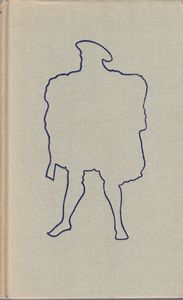 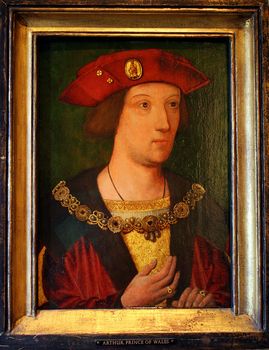 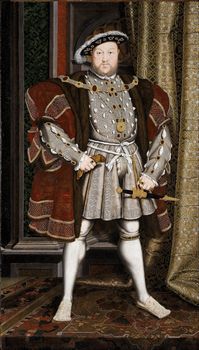 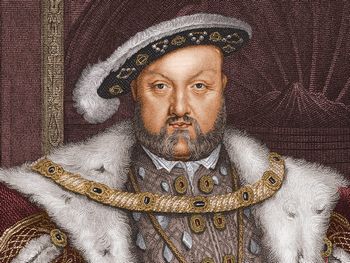 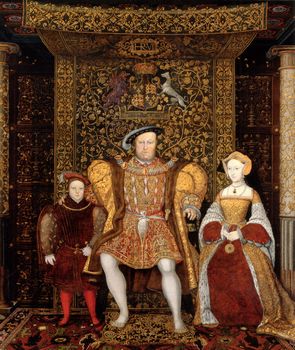 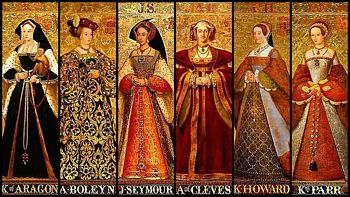 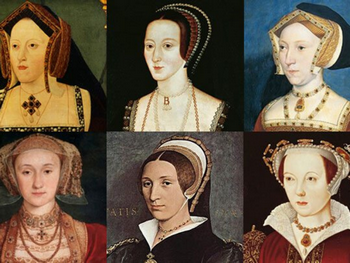 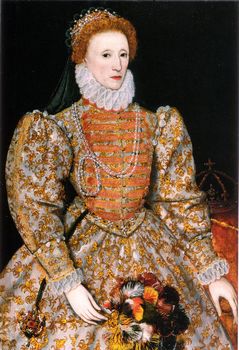  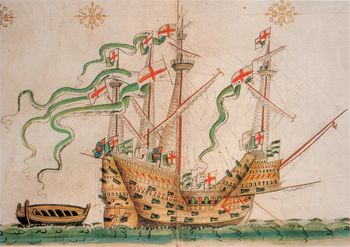 |
Copyright 2008 - 2025 G. Rudolf
